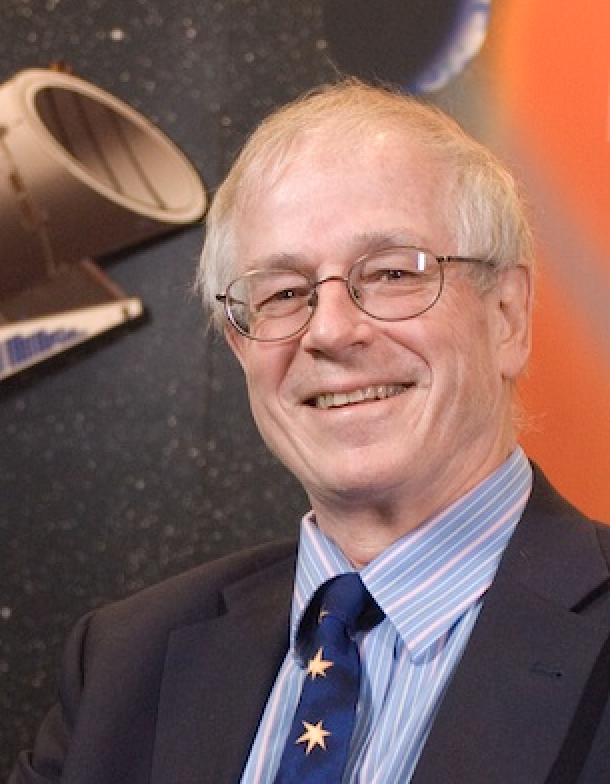
[Click here to get back to the 110th Meeting main page.]
Keynote Speakers
| Andrea Dupree is senior scientist at the Center for Astrophysics and Director of the Solar, Stellar, Planetary Sciences Division. She has followed Betelgeuse since the 80’s…first with the International Ultraviolet Explorer, then by taking the first image of a star other than the Sun…that is, Betelgeuse, from the Hubble Space Telescope, which revealed large hot convective cells on its surface. Most recently, she formed a group called the MOB (Months of Betelgeuse), which is watching Betelgeuse from the ground and space to understand processes of mass loss and the circumstellar environment. And then Betelgeuse had a ‘Great Dimming Event’ that she will talk about in her keynote: |
"The Mysterious Great Dimming of Betelgeuse"
| The bright cool supergiant Betelgeuse became historically faint in February 2020. Various explanations have been offered for its unusual behavior – including conjectures this foreshadows an imminent supernova event. AAVSO photometry; direct imaging; spatially resolved spectroscopy; polarization measures; and infrared, optical, and ultraviolet spectra help us to unravel what is happening to the star. When Betelgeuse is close to the sun in May–July, photometry continues using the spacecraft STEREO that trails the Earth in its orbit. These measurements allow this historic event to be followed from its origin in the stellar surface, through the extended atmosphere, and into the circumstellar medium. |
 |
Sara Seager is a professor of three academic disciplines: Planetary Science, Physics, and Aerospace Engineering at the Massachusetts Institute of Technology. She has a website that you can visit here. Her keynote:
|
"TESS Exoplanets and Beyond"
For thousands of years people have wondered, “Are we alone?” Our Milky Way Galaxy has hundreds of billions of stars and should have trillions of planets (called exoplanets). So far, astronomers have found thousands of exoplanets orbiting relatively nearby stars. Each month, NASA’s latest planet-finding mission, TESS, monitors the brightness of millions of stars, so that each can be searched for a drop in brightness that indicates a planet is “transiting” the host star. Computer algorithms detrend the data and flag threshold crossing events, followed by human or computer vetting of auxiliary data products to weed out planet candidates from false positives or false alarms. A world-wide team of hundreds of astronomers then follow up planet candidates with specialized telescopes to confirm planet status. Professor Seager will describe how we find transiting planets today; how you can get involved; and how in the near future, astronomers hope to search for signs of habitability and signs of life by way of atmospheric “biosignature gases.”
 |
David Latham is a Harvard Astronomy Department lecturer and senior astronomer at the Smithsonian Astrophysical Observatory (SAO) of the Harvard-Smithsonian Center for Astrophysics. His keynote:
|
"Spectroscopy of Eclipsing Binaries and Brown Dwarfs Identified by TESS"
| The pixels in the TESS cameras correspond to 21 arc seconds on the sky, and shallow transit-like events are often due to contamination by deep events from eclipsing binaries as much as an arc-minute away. Seeing-limited photometry using CCD cameras on small telescopes is an important tool for identifying false positives due to nearby eclipsing binaries. Even when follow-up photometry shows that the dips are on the target star, it may be a false positive due to eclipses by a small star or a brown dwarf, which can have roughly the same size as a giant planet. Reconnaissance spectroscopy with the ability to measure Doppler velocities at the level of about 1 km/s is an effective way for exoplanet enthusiasts to weed out the TOIs that are due to stellar and brown-dwarf companions. But, some people think that small stars and brown dwarfs are interesting in their own right. In this talk, I will show what it takes to derive masses, radii, and even ages for such companions. |
 |
Barry Pointon is a faculty member at the British Columbia Insitute of Technology, Convener of the SNEWS Outreach Taskgroup, and a team member of the Canadian Hyper-K (Hyper-Kamiokande nutrino physics) group.
His Keynote:
|
“Neutrinos: The Other Way Stars Shine”
Neutrinos are everywhere. They are produced by nuclear processes, from fission in reactor cores to decays in humble bananas. Observing neutrinos emitted by astrophysical objects, such the sun and supernovae, has opened a new window on the universe, unobscured by atmospheres and interstellar dust. Neutrino observatories are enormous, with exotic locations such as beneath a mountain in Japan or under the ice at the South Pole. In this talk, I will present a brief overview of neutrino astrophysics. I will also describe an opportunity for astronomers everywhere to become involved in a global network of neutrino observatories (SNEWS) in the coordinated effort to prepare for the next great astronomical event–a galactic supernova.

